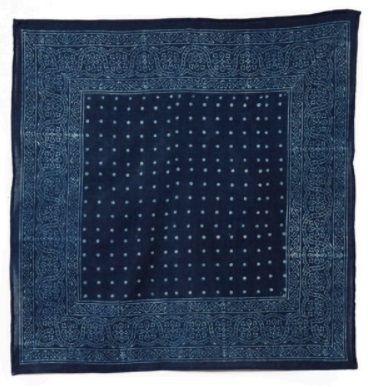
This week: Woodblock printing with indigo and what’s the best type of pot to use for an indigo vat?
Every week, we are emailed with questions from our natural dye community asking simple and complex questions that we thought might be worth sharing. Of course, all of your burning questions are answered by natural dyer in chief, Kathy Hattori, Founder of Botanical Colors.
I am so happy to find your paste and to try mixing it with indigo. I brought woodblocks back from a trip to India and a friend runs a studio outside of Jaipur and makes some for me and I’ve been dying (pun intended) to print with indigo! I’ve had mixed success, with a few garments staying well enough but most washing away, not all but most. Would you recommend adding something to the indigo paste to make it stay better?
If you are going to use indigo as a pigment, you need to also use a binder, rather than a thickener by itself, which is what our print paste is. Using oxidized pigment works better than the actual indigo powder. If someone is making a vat and scooping away the flower, take a little of that and mix with your binder and thickener. Then set it with heat (or whatever the binder manufacturer recommends). That method should be more durable.
I am going to embark on my first indigo vat using the 1-2-3 recipe. I just came home with what I thought was the perfect stock pot from the thrift store for $10, but turns out it is a turkey fryer and is aluminum. I’m wondering if I shouldn’t use it because of this…
I’ve had some vats erode away the inside due to the chemical reaction, so I prefer something non-reactive, like stainless. If you want a reasonably priced metal pot, check for canning kettles or lobster pots. Those are made from enameled metal and don’t react but they are a bit fragile to chips and cracks. It’s also possible to make the 1-2-3 vat in a sturdy 5 gallon bucket. Most of those are heat rated to 212F (100C), so you can put very hot water in them. They’re relatively inexpensive and easy to transport.
